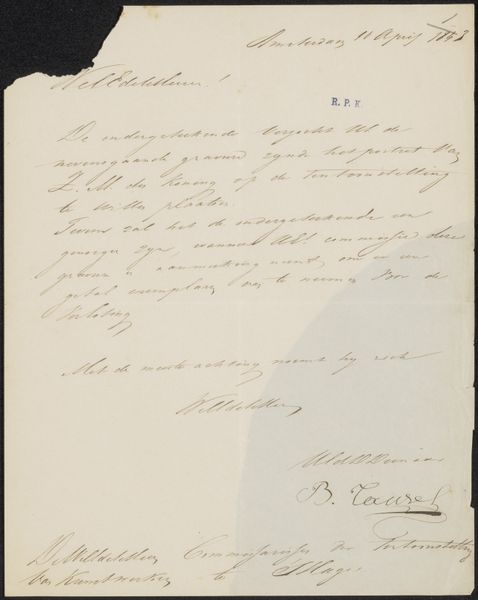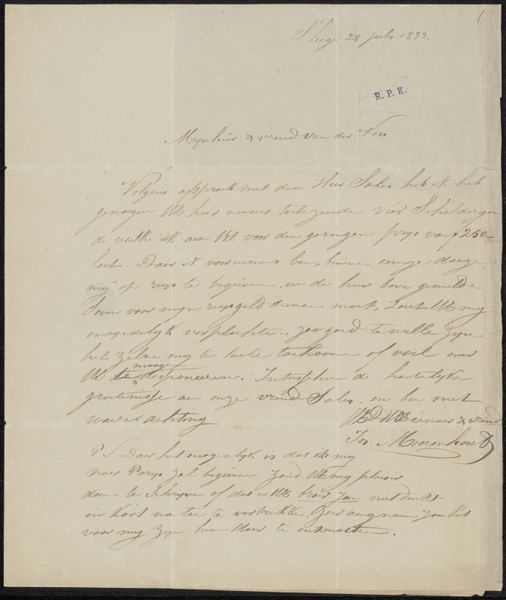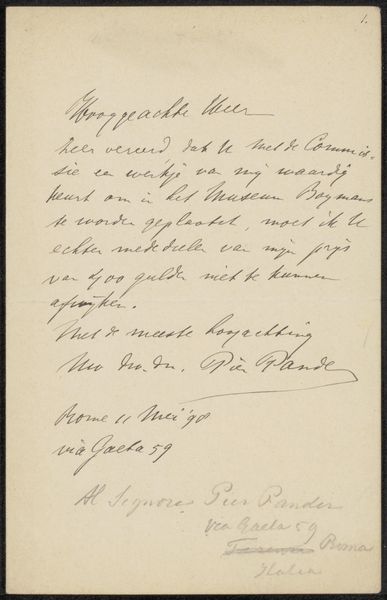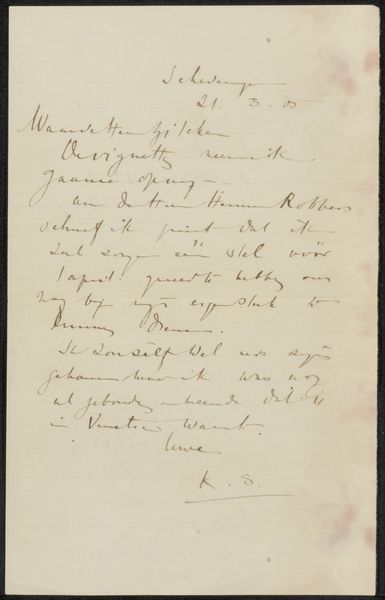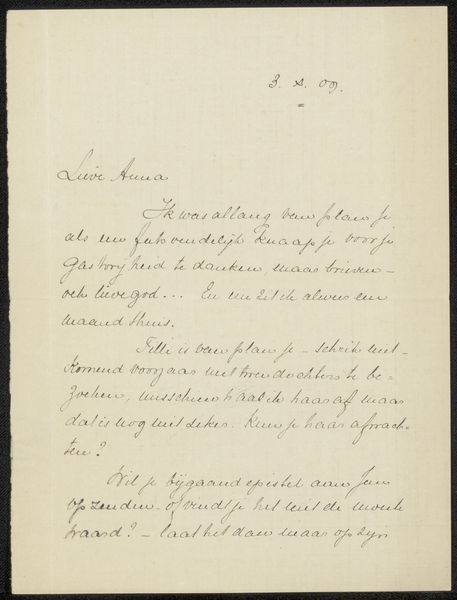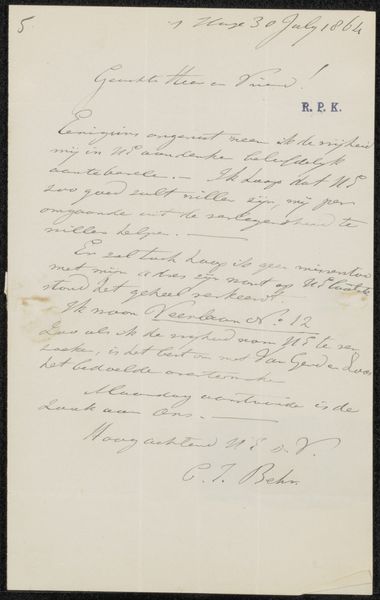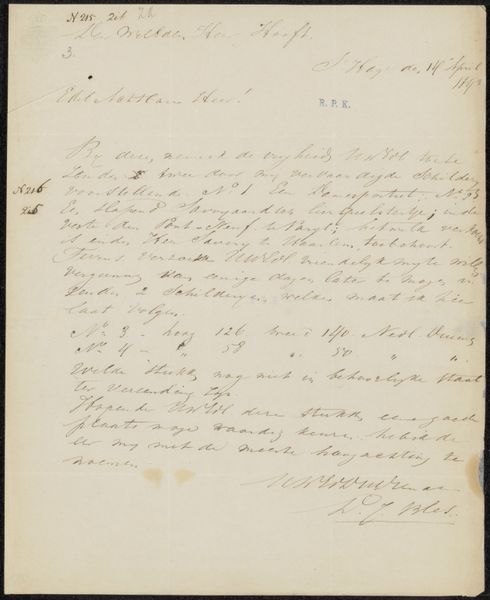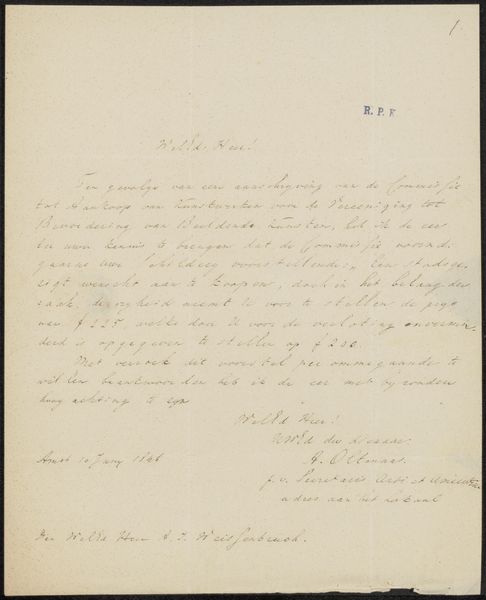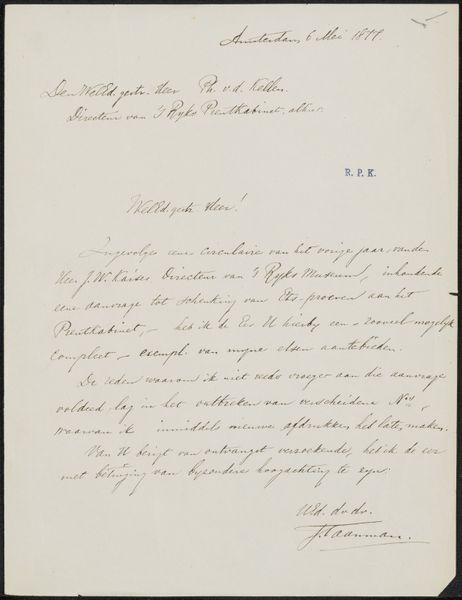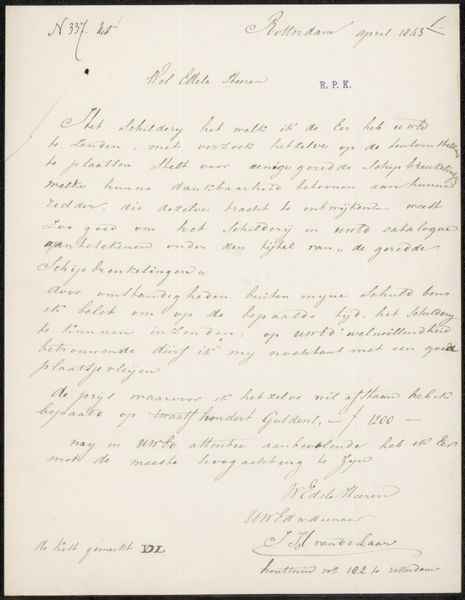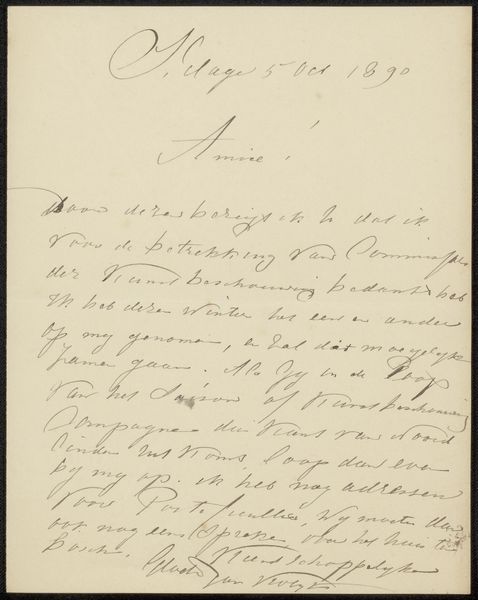
Brief aan de commissie van de Tentoonstelling van Levende Meesters in Utrecht Possibly 1848
0:00
0:00
drawing, paper, ink, pen
#
drawing
#
aged paper
#
dutch-golden-age
#
ink paper printed
#
hand drawn type
#
paper
#
personal sketchbook
#
ink
#
hand-drawn typeface
#
ink drawing experimentation
#
ink colored
#
pen work
#
sketchbook drawing
#
pen
#
sketchbook art
#
calligraphy
Copyright: Rijks Museum: Open Domain
Curator: Here we have Antonie Franciscus Dona's "Brief aan de commissie van de Tentoonstelling van Levende Meesters in Utrecht," dating back to possibly 1848. Editor: It’s quite delicate. The handwriting is almost feathery, covering this aged paper with a script that seems to dance across the page. Curator: It’s a fascinating document reflecting artistic circles in the mid-19th century Netherlands, especially given Dona's request for paintings to be added in the upcoming exhibition. You can glimpse the kind of dialogue happening regarding artistic acceptance and display. Editor: You see that, I’m immediately drawn to the formal qualities – the deliberate spacing, the careful arrangement of the text blocks. The hand-drawn typeface possesses this unique artisanal value and showcases how important calligraphy was back then, and how artists really expressed themselves when corresponding. Curator: Absolutely. The "Tentoonstelling van Levende Meesters" – the Exhibition of Living Masters – was a significant institution. Being selected for it meant a certain level of professional recognition and sales opportunity, vital in an era without established gallery systems or state support for artists. Dona seems concerned about lottery value set too high. Editor: So the lottery impacted whether your artwork would get displayed or not? Did that generate discourse within the art community? Curator: There were plenty of other selection hurdles to overcome, yet it probably affected Dona’s decisions. The politics of imagery in the 19th century was fraught with debate. And to consider his "Brief" beyond that – it stands as evidence of his ambition and awareness of these systems in which creativity could be seen and possibly make income for him. Editor: So from a more modern formalist perspective, thinking about things like intentionality, that means even mundane artistic materials become carriers of meaning, then, historical objects, so this artwork would act as commentary on art value itself! I didn't consider that when observing initially. Thank you! Curator: That's why I feel approaching it with attention to context and its relation to those broader institutional histories grants such insight, doesn't it?
Comments
No comments
Be the first to comment and join the conversation on the ultimate creative platform.
